
As one of the midwest’s largest cities, Kansas City finds itself with a variety of architectural styles. While popular architectural styles changed, the city continued to grow, resulting in an eclectic collection of buildings to see as one ventures through the city.
Below is a study of some of Kansas City’s most iconic buildings that show just how beautiful its mod-podge collection of architecture can be.
New York Life Building
In the center of the Library District, the New York Life Building was completed in 1890 and is considered Kansas City’s first skyscraper. At 12 stories, the building is dwarfed by many of the modern skyscrapers in the city, but it is still an impressive addition to the city’s skyline. Frederick Elmer Hill designed the building in an Italianate Renaissance Revival style. Built with brick and brownstone, the building is symmetrical and H-shaped with a bronze bald eagle tending to its eaglets in a nest above the entryway. The New York Life building is pleasing to the eyes due to its symmetry and the intricate details to be found on the entirety of the building.
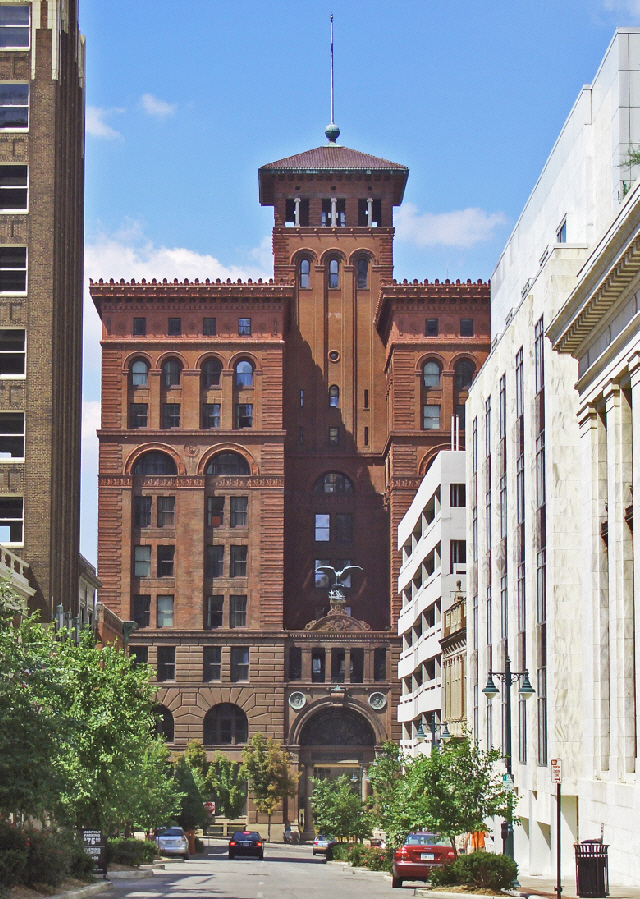
Kauffman Center for the Performing Arts
Located at 16th and Broadway, the Kauffman Center was built as a part of the redevelopment of the downtown area. It’s a nonprofit organization working to enrich the community through a wide selection of performances. The building took five years, 40,000 square feet of glass, 25,000 cubic yards of concrete and 27 steel cables to complete. The main lobby has a glass ceiling and wall which provides a beautiful view of the city. All of the pieces come together to form two half-shells of vertical, concentric arches opening to the south. Within each shell is an independent performance venue. Since opening in 2011, the Kauffman Center has hosted many notable performers for the enjoyment of those in the Kansas City area.
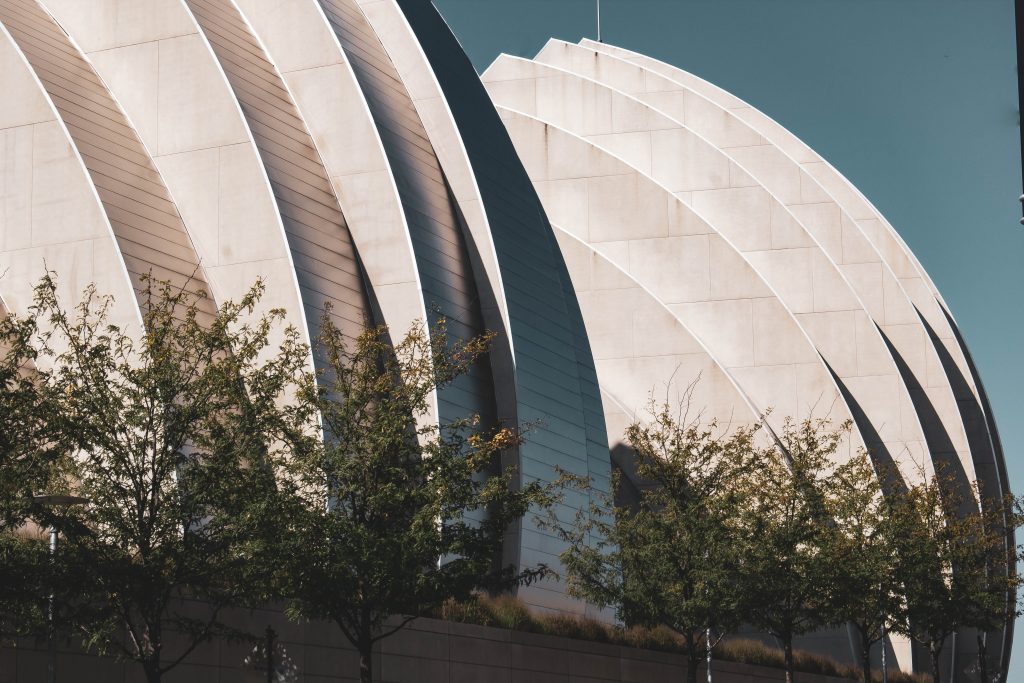
Boley Building
The six-storied Boley Building built in 1909 was legitimately the first of its kind. Designed by Louis Curtiss in the Art Nouveau architectural style, the building is considered to be one of the world’s first metal and glass buildings, as well as the first to use rolled-steel columns. The outside of the building has many terracotta decorative elements and cast iron detailing. Located at 1130 Walnut Street, the Boley Building serves as the world headquarters for Andrews McMeel Universal publishing company.
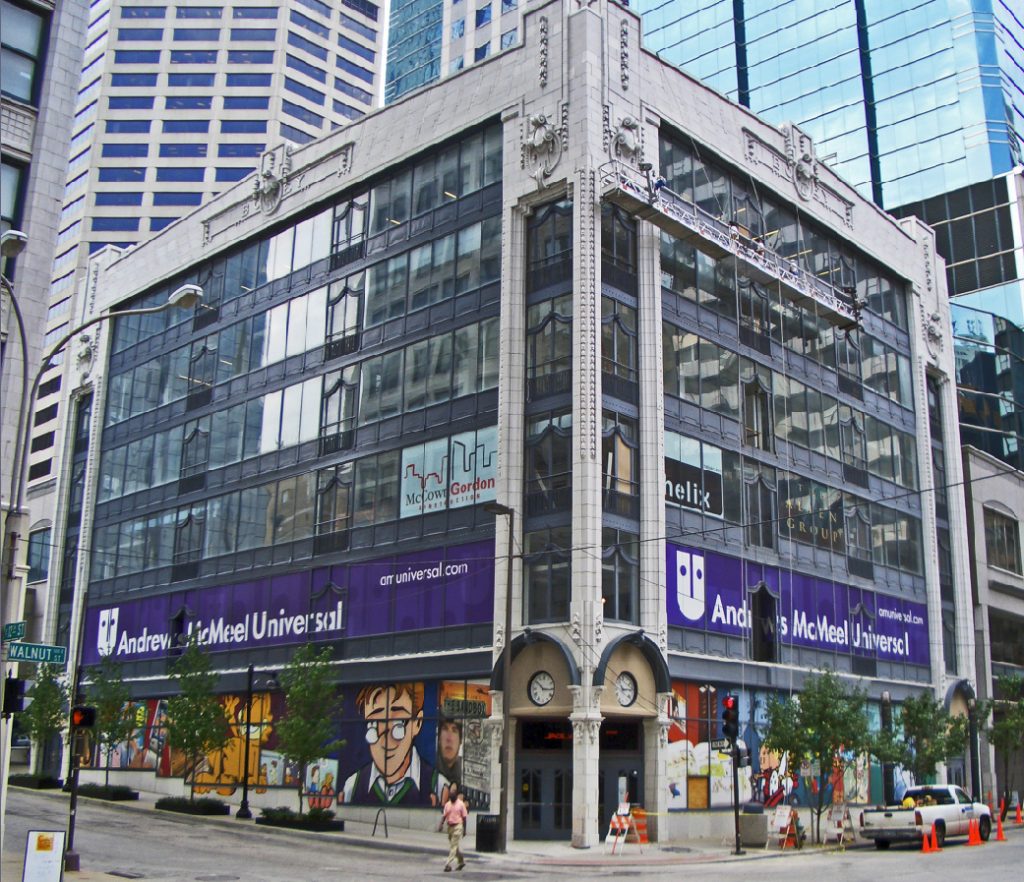
Midland Theatre
Officially the Arvest Bank Theatre at the Midland, the Midland Theatre, located in the Power and Light District, was built in 1961. The 3,200-seat theatre was designed by Thomas W. Lamb with the exterior constructed in a Renaissance Revival style featuring terracotta brick, winged figures, leaves, flowers, swags, volutes, urns and arches. Above the main entrance a four-story arched window rises above a copper and gold marquee with 3,600 light bulbs.

The Nelson-Atkins Museum of Art
Completed in 1933, the Nelson-Atkins Museum of Art, commonly referred to as the Nelson, was designed by prominent Kansas City architects of the time, Wight and Wight. The museum was built in a classical Beaux-Arts style, modeled after the Cleveland Museum of Art. In 2007, the Bloch building was unveiled. The new building, designed by Steve Knoll, increased museum space by 55%. Made primarily with glass, the building’s appearance changes based on the time of day and year as the glass reflects the sky in the day and shows the bright interior at night.
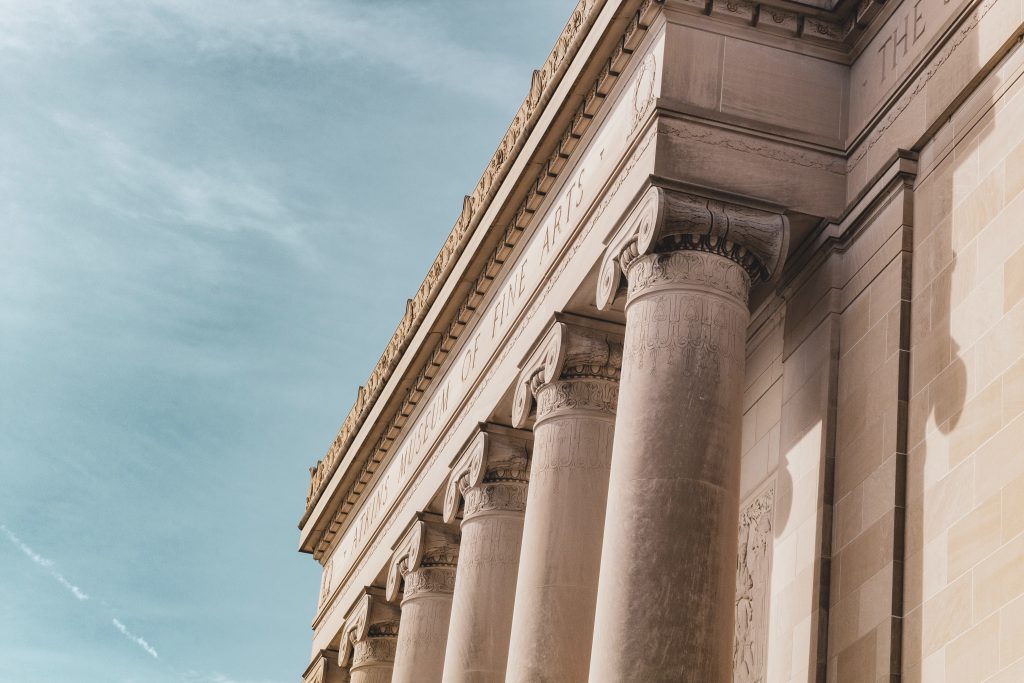
National World War I Museum and Memorial
Designed by New York architect Harold Van Buren Magonigle, the museum and memorial is a high point in the city’s skyline. The museum features the 217-foot-tall Liberty Tower that emits a flame effect at night creating the illusion of a burning pyre. The memorial rises a total of 265 feet above the surrounding area. Made out of limestone, sawed granite and Bedford stone, the memorial is designed in the Egyptian Revival style. Above the museum entrance, an observer can find two stone Assyrian sphinxes covering their faces with their wings. Sphinx “Memory” faces east towards the European battlefields, shielding its face from the horrors that ensued during the war. The second sphinx, “Future,” looks west, hiding its eyes from an unknown future. Designed with as much care, the memorial grounds feature a large elliptical fountain with a tapering staircase ascending to the memorial deck on both sides. Approaching from the south, one would pass the Walk of Honor, a series of bricks commemorating veterans of World War one, veterans of all wars and honored civilians.
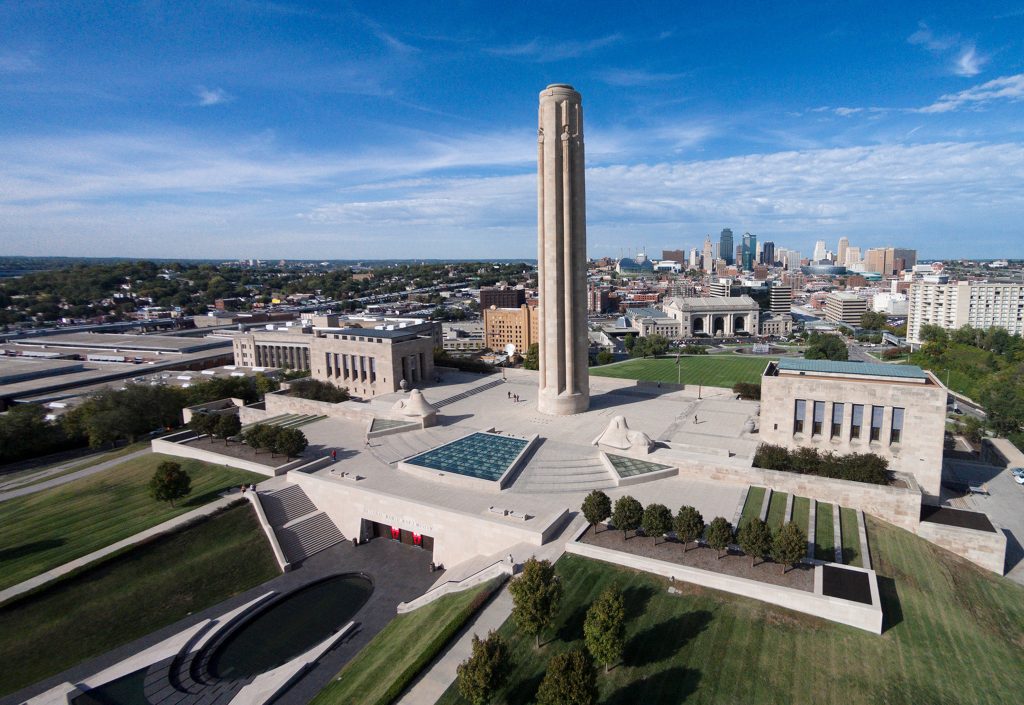
Western Auto Building
First known as the Coca-Cola Building or the Chandler Building, the Western Auto Building was built in 1914 and later became the headquarters of the Western Auto Supply Company. Once the company moved in and installed a multi-story lighted sign on top of the building, it was mostly known for its relation with Western Auto. Designed by Artur C. Tufts & CoThe building was built in a commercial style, focused more on utility. The Western Auto sign that is visible from much of the surrounding neighbourhoods, as well as to drivers on Interstate 35, cemented the building’s legacy as a city landmark.
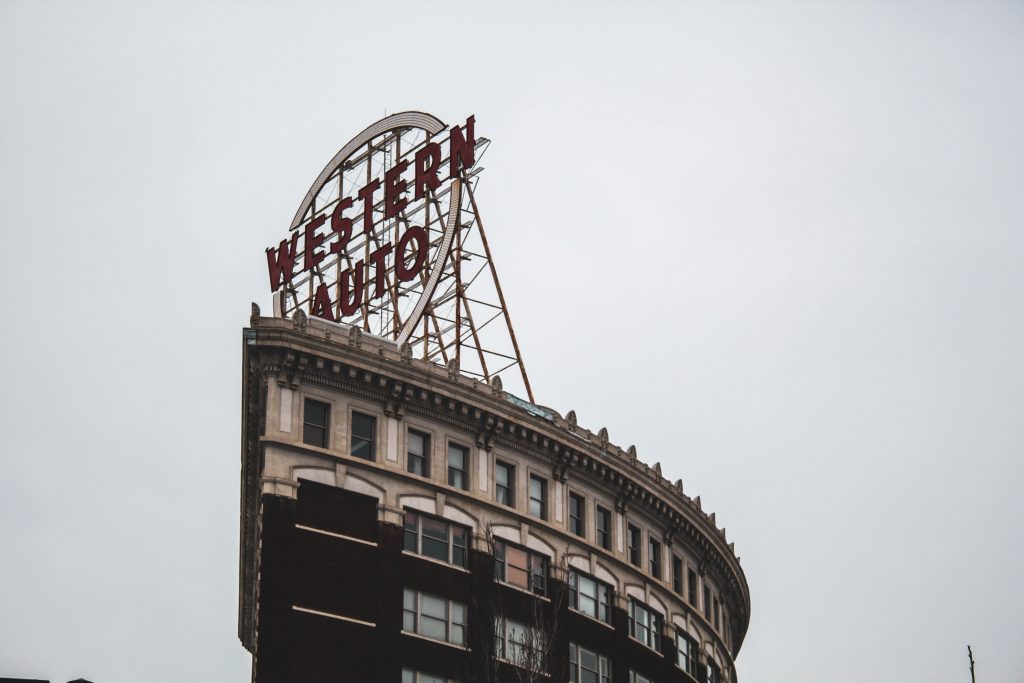
Jackson County Courthouse
Completed in 1934, the Jackson County Courthouse was a project that kept Kansas City’s architects and construction workers employed during the Great Depression. The courthouse was designed in the time’s popular Art Deco style by Wight and Wight. While from a distance, the building looks block-like and simple, the face of the building is actually filled with many intricate, decorative details.
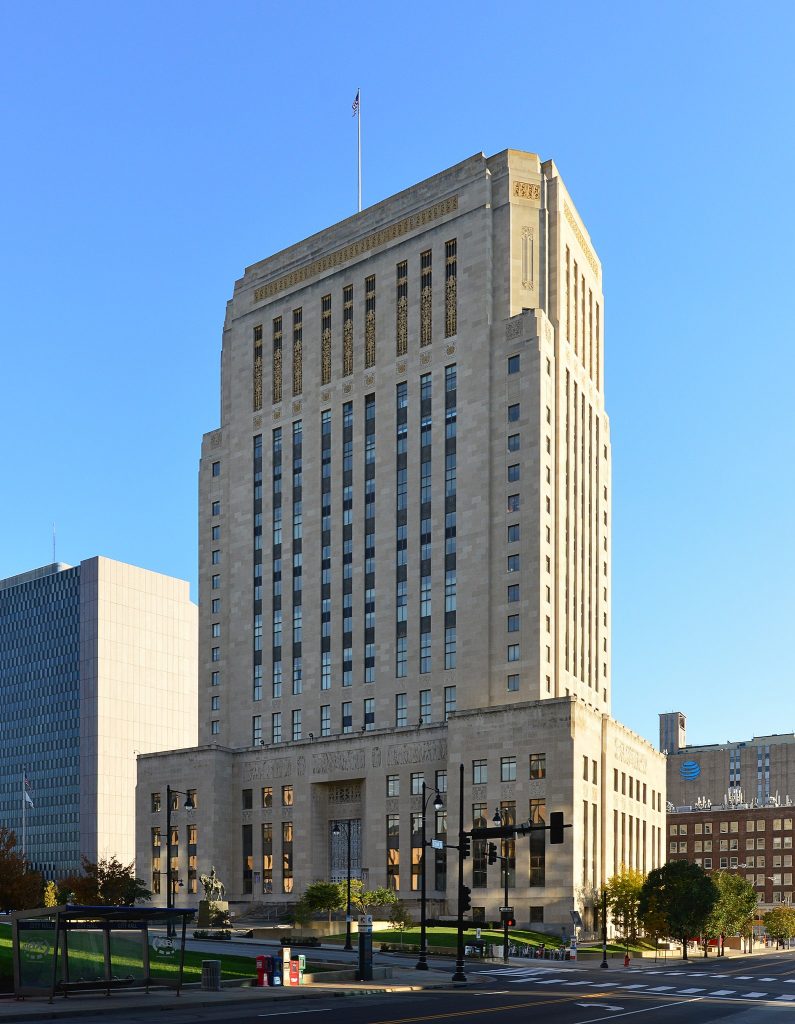

I was born and raised in Kansas City. I know every quadrant of down town and into the suburbs. My father worked at 911 Main at the Commerce Tower Bank Building for Massachusetts Mutual Insurance Company in the 1960’s. I worked for him and rode the city bus to and from downtown KC back to the suburbs where our family lived in Rowland Park, Kansas. He originally worked at the KC Life Insurance Company, the building featured in your article. The buildings of note also, FBI building, AMTRAK and Grand Hall of Union Station, the East and West bottoms, the Money Museum, Federal Reserve Bank building, the US Post office on Grand Avenue, Hallmark Cards on Grand Ave at Crown Center, Country Club Plaza, Liberty Memorial, National WWI Museum, Kansas City Power and Light District with Sprint Convention Center, Municipal Auditorium, Jackson County Courthouse, Cathedral for Immaculate Conception, One Kansas City Place, Kauffman Stadium, Starlight Theatre, Airline History Museum at Charles B Wheeler, Swope Park, Historic Jazz District, Royals Baseball Stadium. Home of barbecue legend,Arthur Bryant, Hallmark Cards Corporate Home Offices.